Reserved seats: The lesser-known formula and a risk to PTI-backed majority
Pakistan’s election rules protecting women and minority representation in the National Assembly pose a big risk to a group of PTI-backd “independent candidates” who have won at least 90 seats: their majority could be turned into a minority.
In the national election, out of 100 independent candidates to be declared winners by the Election Commission of Pakistan (ECP), over 90 were backed by Imran Khan’s PTI.
Together they already form the largest single group in the National Assembly and this number could grow even bigger after the distribution of 70 reserved seats among groups that have won a high number of 266 general seats.
Under the constitution, at least 60 seats in the National Assembly have been reserved for women and at least 10 others for minorities.
Members to these seats are not elected by popular vote. Instead, the seats are distributed among political parties in the house based on their share of general seats won by popular vote. The party bosses decide who is appointed as a lawmaker on these seats.
This proportional distribution is governed by a complex formula partly laid out in the Election Rules 2017 — under Chapter VI to be precise.
The rules dictate that the reserved seats could be distributed only among political parties and not groups of independent candidates — a major setback for PTI.
But it is the lesser-known distribution formula that makes things worse for PTI.
PTI-backed politicians participated in the general election as “independent” candidates and not as a unified group, or party, after Imran Khan’t party was stripped off of its electoral symbol for failing to hold intra-party elections as required by the judiciary.
The same election rules leave one possibility open for PTI-backed newly elected lawmakers. If they join any other political party that has won at least one seat in the National Assembly within three days of the declaration of election results, they would be considered part of that particular party, which in turn would get a higher proportion of reserved seats.
This is an option that PTI has already considered, according to its spokesman Rauf Hassan.
Some other leaders in the party, including Barrister Ali Zafar, believe otherwise. They think PTI should still be considered a single group even if its politicians did not go to polls on the same electoral symbol.
The risk
If PTI-backed independent candidates fail to join any political party and if ECP declares them individual members of the National Assembly or independent lawmakers, their share of reserved seats would be awarded to rivals, PMLN and PPP.
Under the election rules, seats could be distributed only among political parties. Rule 94 says, “the seats reserved for non-Muslims and women shall be divided among the political parties on the basis of their per centum share…” (emphasis added).
The same rule carries an explanation defining the term ‘political party’: “Explanation.— For the purpose of this rule, the expression “political party” means a political party to which a symbol has been allocated by the Commission.”
Rule 95 must ring alarm bells among PTI lawmakers because it says “The seats won by independent candidates shall be excluded from the total number of general seats in the National Assembly or, as the case may be, the Provincial Assembly for the purpose of determination of share of each political party.”
In other words, political parties will be awarded reserved seats based on “their per centum share” or proportion of general seats while the number of independent candidates won’t be taken into account as the ECP works out the share.
This means PTI rivals will get a higher number of reserved seats if PTI-backed candidates fail to join another political party or win ECP recognition as a single group.
Wrong notions about reserved seat distribution
There is a common myth that political parties are awarded one reserved women’s seat for every 4.5 or so general seats won by the popular vote. However, this is not true.
In 2018, PTI was awarded 33 reserved seats for 116 general seats it won and PMLN was awarded 20 reserved seats for 64 general seats it secured. PPP got 11 reserved seats for 43 general seats. This comes to one seat for roughly 3.5 general seats.
But in the same election, MMA was awarded two reserved seats for 12 general seats and GDA one reserved seat for two general seats. MQM-P won a single reserved seat for six general seats. This undermines the claims about one reserved seat being awarded for 3.5 or 4.5 general seats.
The exact number of seats to be awarded to each party is determined under a formula worked out by the ECP.
The formula is complex because distribution is based not only on the proportion of general seats each party has won but also on the share of provinces in the reserved seats for women.
Punjab cannot get more than 32 women seats, KP 10, Sindh 14, and Balochistan 4.
For example, Punjab has 141 general seats but if a political party wins all of them, it cannot possibly get 35 or 40 reserved seats for women because the maximum number for the province is 32.
And then there is the rule about not taking into account the seats won by independent candidates.
So, the “per centum” to win women reserved seats increases or decreases based on the number and strength of political parties eligible to be awarded these seats.
Exact formula for distribution of reserved seats
We can see the seemingly secretive formula in operation on the pages of a 2018 notification issued by ECP. It would solve the puzzle of why GDP was awarded a reserved seat for two general seats and MQP-P got only a single reserved seat for six general seats.
In 2018, PPPP won 35 general seats for National Assembly from Sindh province, PTI won 15 general seats from the same province and an independent candidate joined it, MQM-P bagged six general seats, and GDA two. There was one other independently elected lawmaker and one result was withheld. However, ECP did not take the two constituencies into account while working out a share of reserved seats.

A total of 59 general seats of the National Assembly from the province were taken into account. The number was divided by the total share of reserved women’s seat for the province, namely 14. The answer was 4.12 — this was the “quota”, or the denominator, to be used in the calculation.
Now, general seats won by each of the political parties were divided by the quota, e.g, 4.12.
The answer for PPPP was 8.31. So it got 8 reserved seats for women from Sindh. PTI was awarded 4 seats.
The calculation used the principle of rounding off. Hence, when MQM-P’s six seats were divided by 4.21, the answer was 1.43. Had it been 1.53 (above 1.5), MQM-P would have won two reserved seats. That didn’t happen and the remaining reserved seat went to GDA, though it had won only two general NA seats from the province.
Fears of reserved seats turning majority into minority
By Saturday evening, at least 54 PTI-backed candidates had won general seats in Punjab and 38 others in Khyber Pakhtunkhwa. At least one had won a general seat in Balochistan.
If PTI is revived in the National Assembly as a political party or if PTI-backed candidates join any other party, their 93 seats could win them 13 reserved women seats in Punjab and 7 others in KP, according to the formula discussed above.
Punjab has 141 general seats and 32 reserved seats for women. So the “quota” number is 4.21. However, since two results are being delayed, it would drop to 4.3.
KP’s quota for 44 general seats (one election postponed) and 10 women-reserved seats comes to 4.4.
The quota for Punjab would fetch at least 16 reserved seats for PMLN if PTI-backed candidates stay in the game by joining another party.
But if they fail to make a move and ECP declares them independent lawmakers, the quota for Punjab would drop to 2.65. This means reserved seats not going to PTI will be awarded to other parties, especially PMLN.
PMLN’s share of reserved women seats would grow to 25 from Punjab alone. PPP will likely get around three seats, and the remaining four will be distributed among other parties including PML-Q, which has won three general seats.
This scenario could make PMLN the largest single party in the National Assembly with over 100 seats in every sense of the term.
The formation of the next government largely depends on the distribution of reserved seats.
For the latest news, follow us on Twitter @Aaj_Urdu. We are also on Facebook, Instagram and YouTube.


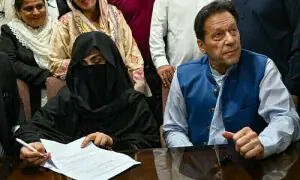

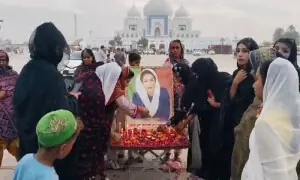



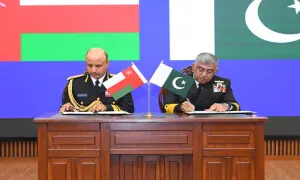

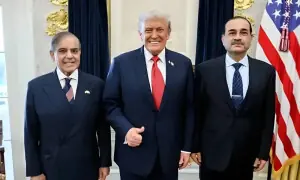


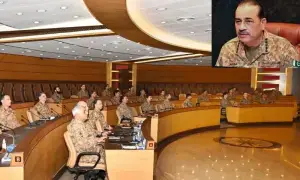
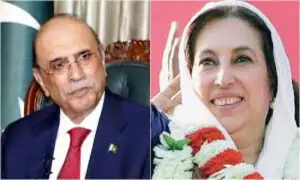
Comments are closed on this story.